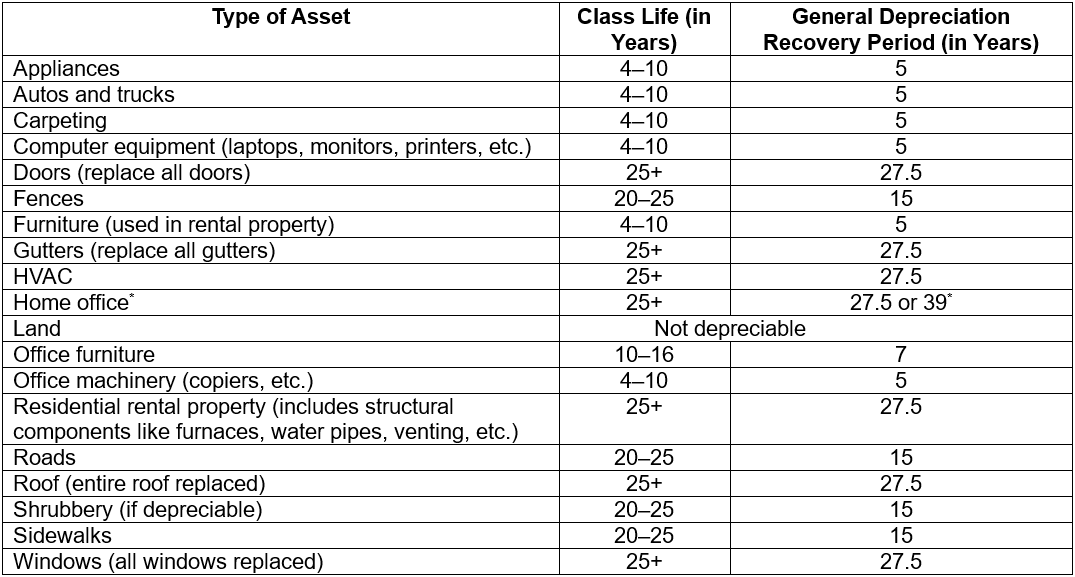

Before rental property owners can calculate their depreciation for the year, they must determine an asset’s class life and recovery period, which are set by the IRS. We’ve put together a table showing common rental property assets and improvements along with their expected lifespans and recovery periods. Use this as a quick-reference guide when you’re tracking your assets and working on your depreciation calculations.
Before you dive into the table, let’s clarify a few terms.

*The recovery period for your home office depends on what sort of residence you live in. Do you live in a personal-use single-family home? If you use part of it as a home office, you’ll depreciate that part of your home as nonresidential real property with a recovery period of 39 years.
Is your home an apartment in a building you own and operate as residential rental property? If so, then you’ll depreciate the part used as an office as residential rental property with a recovery period of 27.5 years.
Don’t see the asset you’re searching for in the table? If it isn’t listed in IRS publication 946 Appendix B either, check with your tax preparer. Typically, any assets without a specified class life automatically have a seven-year recovery period under the General Depreciation System or 12 years under the Alternative Depreciation System.
The IRS requires real estate investors to use the Modified Accelerated Cost Recovery System (MACRS) to depreciate rental property placed in service after 1986. Plus, you must use the General Depreciation System to depreciate your property unless you elect or are specifically required by law to use the Alternative Depreciation System. The General Depreciation System is the default choice for most rental property owners because of the shorter recovery periods and possibility of bonus depreciation.
For more information on rental property assets and depreciation, refer to our related resource articles: